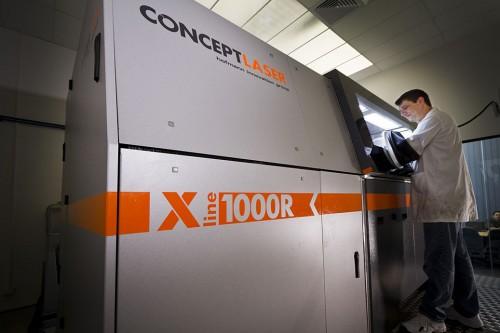 It’s only a matter of time before we begin seeing just about every man-made object on this planet 3D printed in some form or another. We’ve already seen houses, cars, and electronic devices fabricated on 3D printers. Now, you can check yet another item off of that list.
It’s only a matter of time before we begin seeing just about every man-made object on this planet 3D printed in some form or another. We’ve already seen houses, cars, and electronic devices fabricated on 3D printers. Now, you can check yet another item off of that list.
 Researchers at Monash University, in Melbourne, Australia have teamed with individuals from Deakin University and CSIRO to 3D print two proof of concept jet engines. One is currently on display at the International Air Show in Avalon, Victoria, Australia, and the other is housed at Microtubo (Safran), a French aerospace company. The engine design, which is based on an auxiliary powered gas turbine engine, provided to the Univeristy by Microturbo (Safran), is similar to one which would have been used in a Falcon 20 aircraft.
Researchers at Monash University, in Melbourne, Australia have teamed with individuals from Deakin University and CSIRO to 3D print two proof of concept jet engines. One is currently on display at the International Air Show in Avalon, Victoria, Australia, and the other is housed at Microtubo (Safran), a French aerospace company. The engine design, which is based on an auxiliary powered gas turbine engine, provided to the Univeristy by Microturbo (Safran), is similar to one which would have been used in a Falcon 20 aircraft.
“It was our chance to prove what we could do,” says Professor Xinhua Wu, director of the Monash Centre for Additive Manufacturing. “But when we reviewed the plans we realised that the engine had evolved over years of manufacture. So we took the engine to pieces and scanned the components. Then we printed two copies.”
The government supported project could lead to much innovation in engine design. Already many private companies have been in contact with Monash University, and they have formed partnerships with large aerospace companies.
“It was a challenge for the team and pushed the technology to new heights of success – no one has printed an entire engine commercially yet,” explained Ben Batagol, of Amaero Engineering, which is the company created by Monash University to make the technology available to Australian industry.
The Monash Centre for Additive Manufacturing is playing a key role in technological advancement in Australia. With their highly sophisticated metal 3D printers, they are able to prototype metal parts, devices and machinery for virtually every industry.
“Xinhua and her Monash team have demonstrated their mastery of additive manufacturing in metal,” said Jean-François Rideau, head of R&T at Microturbo (Safran). “The partnership with Microturbo (Safran) is a success story that was recognised last year when Safran gave the team its Prize ‘Innovation for Product and Technology’ for the excellent work carried out in partnership with Microturbo and the University of Birmingham. Monash and AMAERO are already key partners for our new developments and we are keen to have their help in developing new technologies for our future engines.”
Xinhue believes that the aerospace and biomedical industries stand to gain the most by using metal 3D printing like that provided by Monash. Titanium alloys provide for a plethora of uses, whether it is in the production of ultra strong mechanical parts or in the creation of biocompatible prostheses and implants.
The company apparently used a Concept Laser Xline 1000R 3D printer to fabricate the parts for these engines. It has an impressive build envelope of 600x400x500mm, which makes it the world’s largest selective laser sintering 3D printer.
What do you think of the potential of 3D printed jet engines? Will such processes lead to better, more efficient engine designs? Discuss in the 3D printed jet engine forum thread on 3DPB.com. Check out the videos below.
Subscribe to Our Email Newsletter
Stay up-to-date on all the latest news from the 3D printing industry and receive information and offers from third party vendors.
You May Also Like
NSF Awards Kentucky $1M for Advanced Manufacturing
The National Science Foundation has awarded a $1 million grant to the University of Louisville for the Advancing Manufacturing and Building Construction Technologies (NSF AMT) project. This initiative is part...
3D Printing News Briefs, May 11, 2024: 3D Printed Stent, Tower, Sculptures, & More
We’re starting off with medical research in today’s 3D Printing News Briefs, as researchers in Korea used CT images and 3D printing to fabricate an educational simulator for a mastoidectomy....
3D Printing Unpeeled: Wind Turbines, Probiotics and Lenses
TPI Composites, ORNL and Ingersoll Rand are working to make wind turbine tooling segments that can be 18.3 meters long. These elements also include resistive wires that help keep the...
Tethon 3D Releases Cost-effective Bioprinter
Tethon 3D, known for its ceramic-loaded DLP materials, custom resins, and DLP 3D printers, has recently released a bioprinter. Vat polymerization printers like DLP systems have been widely used by...

































